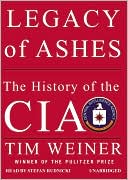Surging against the wind
These operations are qualitatively different from what we have done before. Our concept is to knock over several insurgent safe havens simultaneously, in order to prevent terrorists relocating their infrastructure from one to another, and to create an operational synergy between what we're doing in Baghdad and what's happening outside. Unlike on previous occasions, we don't plan to leave these areas once they’re secured. These ops will run over months, and the key activity is to stand up viable local security forces in partnership with Iraqi Army and Police, as well as political and economic programs, to permanently secure them. The really decisive activity will be police work, registration of the population and counterintelligence in these areas, to comb out the insurgent sleeper cells and political cells that have "gone quiet" as we moved in, but which will try to survive through the op and emerge later. This will take operational patience, and it will be intelligence-led, and Iraqi government-led. It will probably not make the news (the really important stuff rarely does) but it will be the truly decisive action.
When we speak of "clearing" an enemy safe haven, we are not talking about destroying the enemy in it; we are talking about rescuing the population in it from enemy intimidation. If we don't get every enemy cell in the initial operation, that's OK. The point of the operations is to lift the pall of fear from population groups that have been intimidated and exploited by terrorists to date, then win them over and work with them in partnership to clean out the cells that remain – as has happened in Al Anbar Province and can happen elsewhere in Iraq as well.
The "terrain" we are clearing is human terrain, not physical terrain. It is about marginalizing al Qa’ida, Shi’a extremist militias, and the other terrorist groups from the population they prey on. This is why claims that “80% of AQ leadership have fled” don’t overly disturb us: the aim is not to kill every last AQ leader, but rather to drive them off the population and keep them off, so that we can work with the community to prevent their return.
This is not some sort of kind-hearted, soft approach, as some fire-breathing polemicists have claimed (funnily enough, those who urge us to “just kill more bad guys” usually do so from a safe distance). It is not about being “nice” to the population and hoping they will somehow see us as the “good guys” and stop supporting insurgents. On the contrary, it is based on a hard-headed recognition of certain basic facts . . .
This is REALLY great stuff. Kilcullen’s post displays a welcome similarity to John Nagel’s Learning to Eat Soup with a Knife, one of the best works on counterinsurgency (COIN) available. It’s clear that the Petraeus crew, with its emphasis on community contact, Sunni alliance and police operations, is finally implementing an actual COIN strategy. The only problems here, again, are numbers, and more importantly, time.
Petraeus has to report on the operational effectiveness of "the surge" in September and unless significant "improvement" can be shown, in my humble opinion, Congress will cut funding and we’ll begin a significant drawdown in troop levels with possible redeployments to Kurdistan and a shift from active combat operations to passive advisory teams. Therefore, Petraeus has just under three months to acquire some modicum of "success" in order to convince the Congress to continue funding.
The problem is, that defining success in congressional terms will almost certainly be inconsistent with the COIN definition. A successful COIN strategy is measured in years. Operators must first create the necessary environment for a change in the Iraqi mindset and then convince the local population that THIS TIME it will be different by insuring security and fostering economic growth over the long-term. Economic growth, a factor that is vitally important for COIN operations, is, however, not something that can be measured in two months, it can take years before "success" is evident for the nearest politician or pundit to "measure."
Congress, rightly or wrongly in the typical Beltway fashion, will be defining success, if they are in actuality looking for it, through a micro mindset; they need tangible proof that the increase in boots is actually making a difference and that "the surge" is accomplishing something radically different from the previous ill-fated "clear and hold" operations. Therefore, even if these operations are being waged perfectly and are causing phenomenal successes, I don’t think these successes will be evident in the manner in which a Congress, gearing up for the presidential election, will require in order to continue funding a war the majority of Americans have turned against.
Hopefully, forces can be focused to exploit success in the recent offensives in Baquba and the "Baghdad Belts" and COIN operations can concentrate on these areas which can then be treated as microcosms for what American forces could possibly accomplish if given more time. Simply put, our only hope and America’s last best chance for success, lies with a man named Petraeus, the academics who surround him, and the military men and women commanded by him.
Godspeed boys and good hunting.



0 Comments:
Post a Comment
<< Home